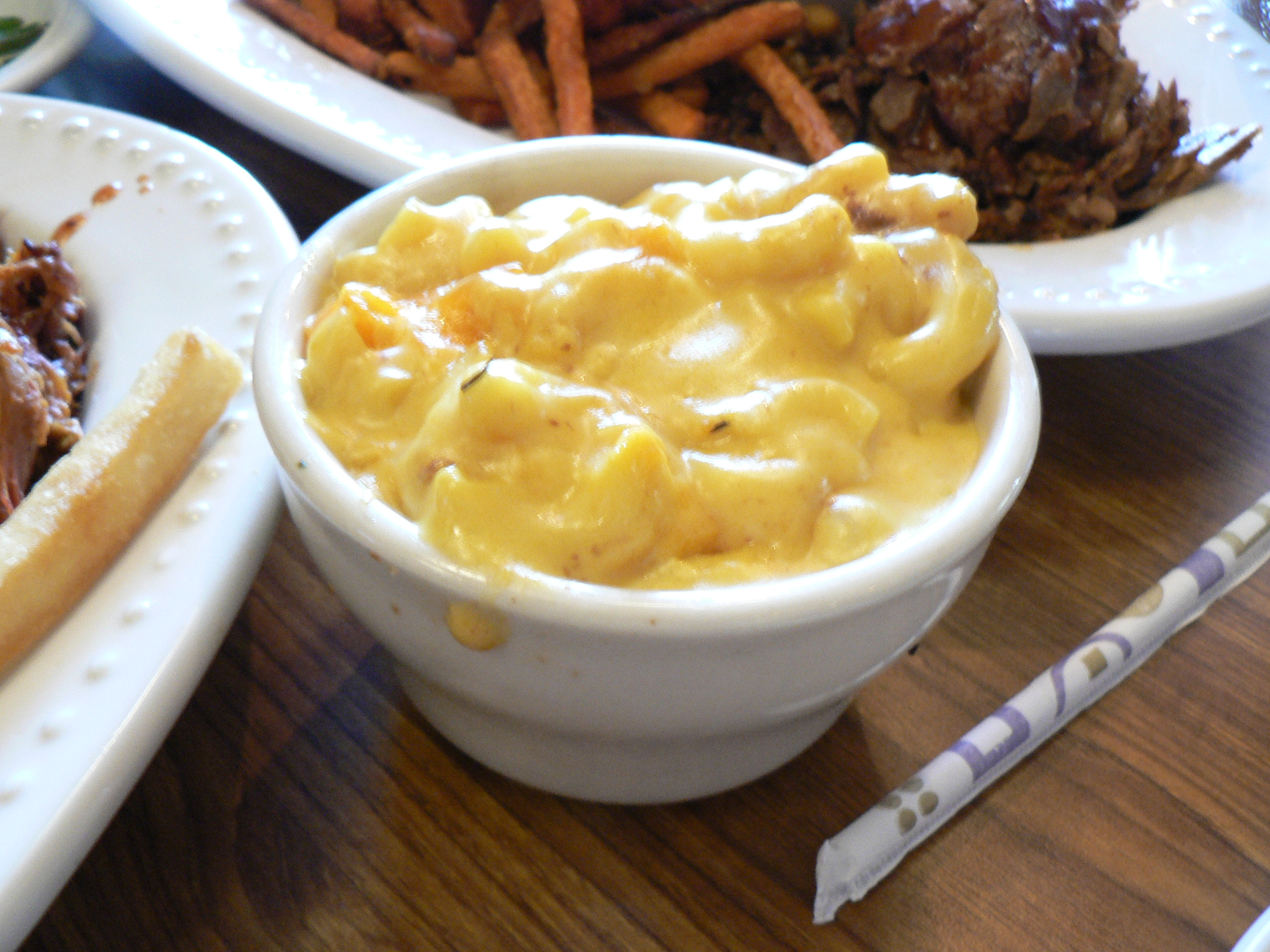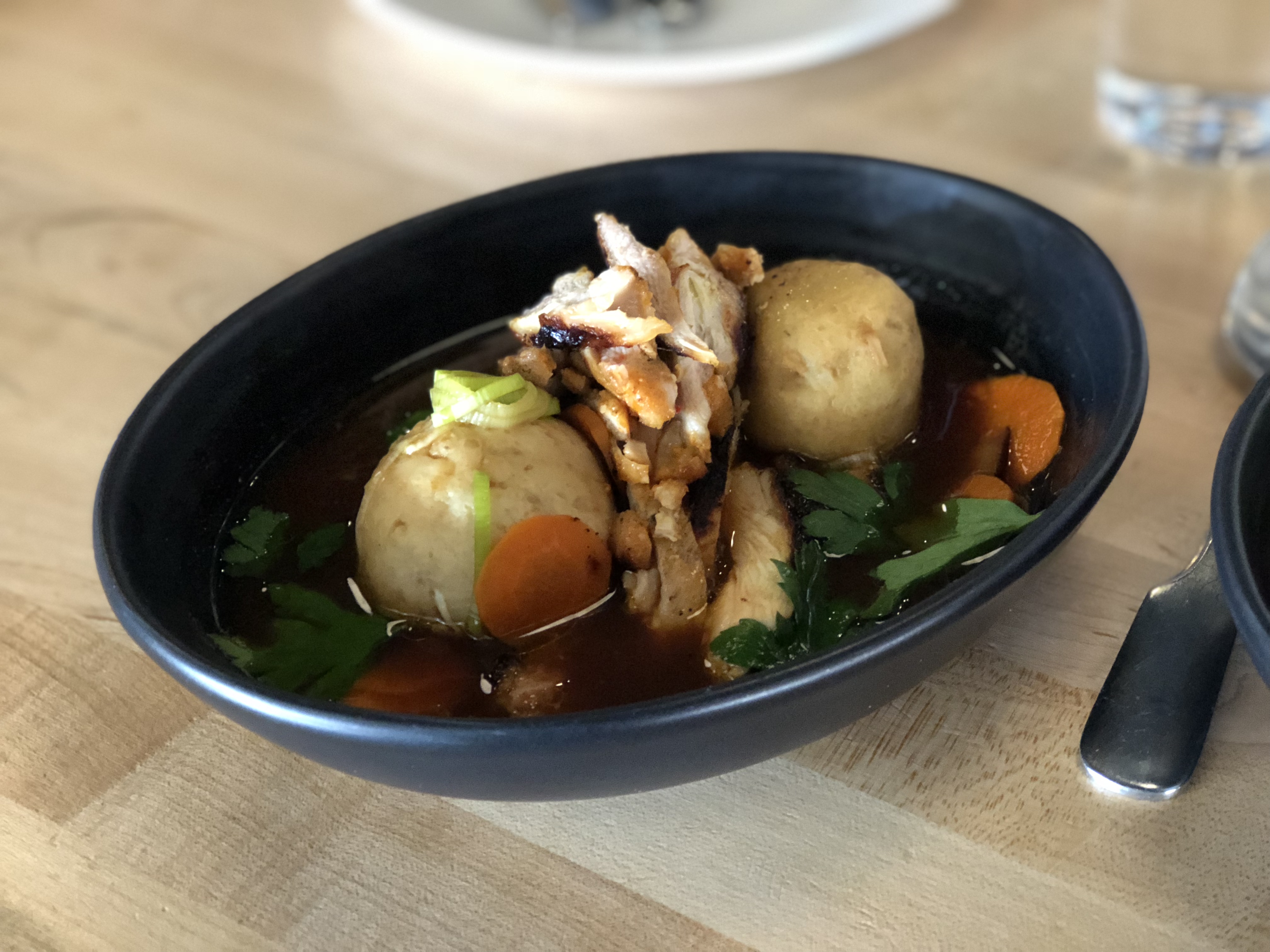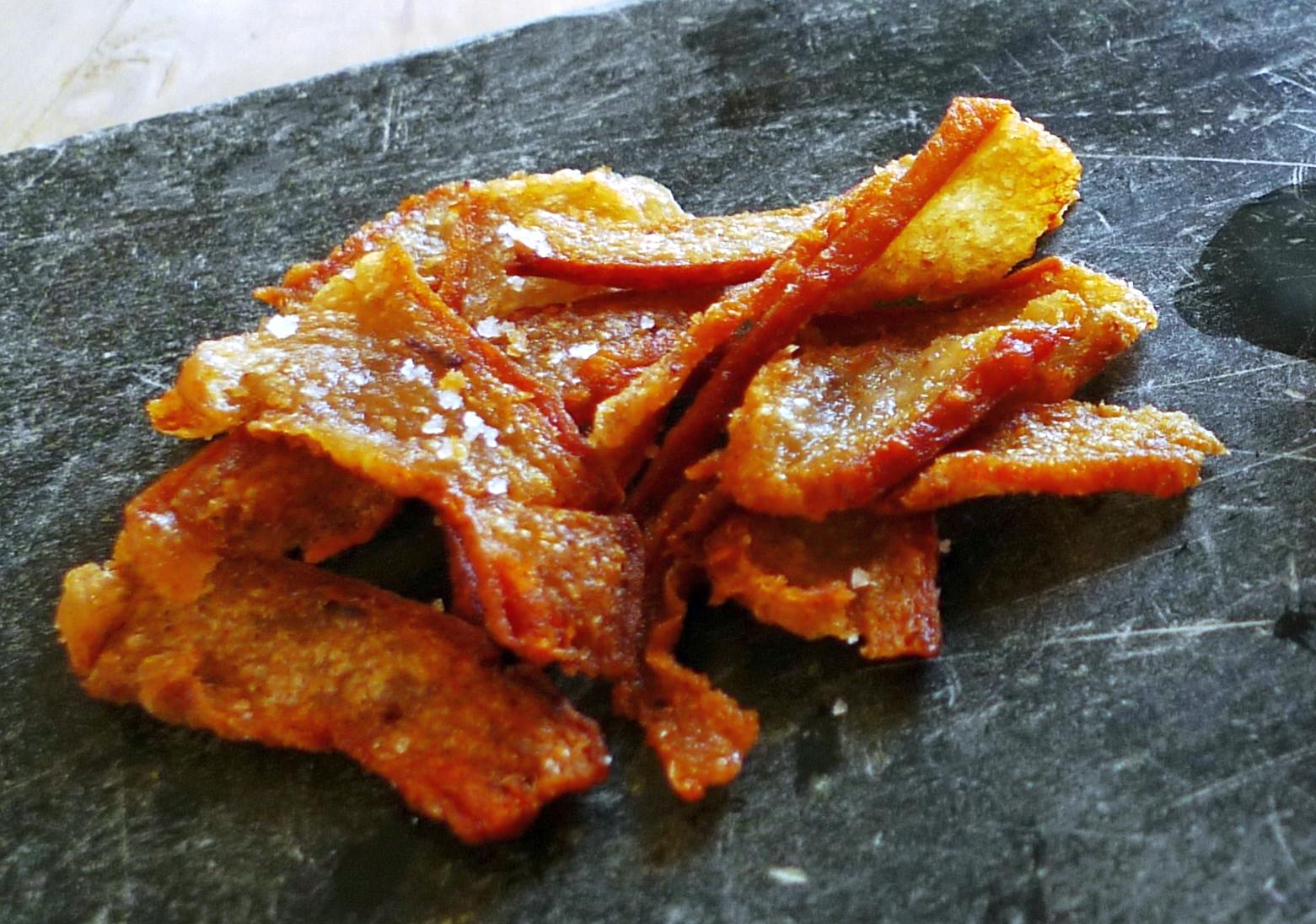|
Gribenes
In Ashkenazi Jewish cuisine, gribenes or grieven ( yi, גריבענעס, , "cracklings"; he, גלדי שומן) are crisp chicken or goose skin cracklings with fried onions. As with other cracklings, gribenes are a byproduct of rendering animal fat to produce cooking fat, in this case kosher schmaltz.Gil Marks, ''Encyclopedia of Jewish Food'', p. 239 (John Wiley and Sons, 2010). . Found aGoogle Books Accessed January 4, 2011.Esther Rosenblum Cohen, "Chicken Fat", ''Jewish Magazine'', August 2007. Found a Accessed January 4, 2011. A favored food in the past among Ashkenazi Jews, ''gribenes'' is frequently mentioned in Jewish stories and parables. Gribenes can be used as an ingredient in other dishes like kasha varnishkes, fleishig kugel and gehakte leber. Holiday food This dish is often associated with the Jewish holidays Hanukkah and Rosh Hashanah. Traditionally, ''gribenes'' were served with potato kugel or latkes during Hanukkah. ''Gribenes'' are also associated with P ... [...More Info...] [...Related Items...] OR: [Wikipedia] [Google] [Baidu] |
Ashkenazi Jewish Cuisine
Ashkenazi Jewish cuisine is an assortment of cooking traditions that was developed by the Ashkenazi Jews of Eastern, Central, Western, Northern, and Southern Europe, and their descendants, particularly in the United States and other Western countries. Ashkenazi Jewish foods have frequently been unique to Ashkenazi Jewish communities, and they frequently consist of local ingredients (such as beets, cabbage, and potato), all of which are generally prepared in accordance with the laws of '' kashrut''. Some of these ingredients have not been popular in local or neighbouring non-Jewish communities due to a history of limited interaction between Ashkenazi Jews and non-Jews. The cuisine is largely based on ingredients that were affordable to the historically poor Ashkenazi Jewish community of Europe, and it is frequently composed of ingredients that were readily available and affordable in the regions and communities of Europe in which Ashkenazi Jews lived. Some ingredients were co ... [...More Info...] [...Related Items...] OR: [Wikipedia] [Google] [Baidu] |
Cracklings
Cracklings (USA), crackling (British English), also known as scratchings, are the solid material which remains after rendering animal fat and skin to produce lard, tallow, or schmaltz, or as the result of roasting meat. It is often eaten as a snack food or made into animal feed. It is also used in cooking. Alan Davidson, ''The Oxford Companion to Food'', ''s.v.'' Cracklings are most commonly made from pork, goose, and chicken, but are also made from other poultry and from beef, lamb and mutton. Sources of cracklings French cuisine In French cuisine, cracklings (''grillons'', ''grattons'', ''gratterons'', ''frittons'') may be made from pork, goose, or turkey. These are salted while hot and eaten as an hors-d'œuvre, especially in the southwest. Pork Pig skin made into cracklings are a popular ingredient worldwide: in Central European, Quebecois (''cretons''), Latin American and Spanish ('' chicharrones''), East Asian, Southeast Asian, Southern United States, and Cajun (''gratt ... [...More Info...] [...Related Items...] OR: [Wikipedia] [Google] [Baidu] |
Schmaltz
Schmaltz (also spelled schmalz or shmalz) is rendered (clarified) chicken or goose fat. It is an integral part of traditional Ashkenazi Jewish cuisine, where it has been used for centuries in a wide array of dishes, such as chicken soup, latkes, matzah brei, chopped liver, matzah balls, fried chicken, and many others, either as a cooking fat, spread, or flavor enhancer. Etymology Schmaltz is a noun derived from the German verb ''schmelzen'', meaning "to melt". The verb can be traced back to the Germanic root "smeltan", which survives in the Modern English verb "to smelt". The term entered English usage through Yiddish-speaking Ashkenazi Jews who used "schmaltz" to refer to kosher poultry fat; the word ''shmalts'' is the Yiddish word for rendered chicken fat. The English term "schmaltz" is derived from Yiddish and is cognate with the German term ''Schmalz'', which refers to any rendered fat of animal origin, including lard (more fully ''Schweineschmalz'') and ... [...More Info...] [...Related Items...] OR: [Wikipedia] [Google] [Baidu] |
Louisiana
Louisiana , group=pronunciation (French: ''La Louisiane'') is a U.S. state, state in the Deep South and South Central United States, South Central regions of the United States. It is the List of U.S. states and territories by area, 20th-smallest by area and the List of U.S. states and territories by population, 25th most populous of the List of U.S. states, 50 U.S. states. Louisiana is bordered by the state of Texas to the west, Arkansas to the north, Mississippi to the east, and the Gulf of Mexico to the south. A large part of its eastern boundary is demarcated by the Mississippi River. Louisiana is the only U.S. state with political subdivisions termed List of parishes in Louisiana, parishes, which are equivalent to County (United States), counties, making it one of only two U.S. states not subdivided into counties (the other being Alaska and its List of boroughs and census areas in Alaska, boroughs). The state's capital is Baton Rouge, Louisiana, Baton Rouge, and its larges ... [...More Info...] [...Related Items...] OR: [Wikipedia] [Google] [Baidu] |
Pastrami
Pastrami (Romanian: '' pastramă'') is a food originating from Romania usually made from beef brisket, lamb, pork, chicken sometimes from turkey. The raw meat is brined, partially dried, seasoned with herbs and spices, then smoked and steamed. Like corned beef, pastrami was originally created as a way to preserve meat before the invention of refrigeration. One of the iconic meats of Romanian cuisine as well as American Jewish cuisine and the New York City cuisine, hot pastrami is typically served at delicatessen restaurants on sandwiches such as the pastrami on rye. Etymology and origin The name pastrami comes from Romanian ''pastramă'', which is related to the Turkish '' pastırma''. It is probably derived from the Turkish verb '' bastırmak'' meaning "to press". However, it could also be from the Romanian '' a păstra'' meaning "to keep, preserve". Both of these etymologies are plausible, but mutually exclusive. Wind-dried beef had been made in Anatolia for centuries, and ... [...More Info...] [...Related Items...] OR: [Wikipedia] [Google] [Baidu] |
Hot Dog
A hot dog (uncommonly spelled hotdog) is a food consisting of a grilled or steamed sausage served in the slit of a partially sliced bun. The term hot dog can refer to the sausage itself. The sausage used is a wiener ( Vienna sausage) or a frankfurter ( Frankfurter Würstchen, also just called frank). The names of these sausages commonly refer to their assembled dish. Some consider a hot dog to technically be a sandwich. Hot dog preparation and condiments vary worldwide. Typical condiments include mustard, ketchup, relish, onions in tomato sauce, and cheese sauce. Common garnishes include sauerkraut, diced onions, jalapeños, chili, grated cheese, coleslaw, bacon, and olives. Hot dog variants include the corn dog and pigs in a blanket. The hot dog's cultural traditions include the Nathan's Hot Dog Eating Contest and the Oscar Mayer Wienermobile. These types of sausages were culturally imported from Germany and became popular in the United States. It became a working-cla ... [...More Info...] [...Related Items...] OR: [Wikipedia] [Google] [Baidu] |
New York Times
''The New York Times'' (''the Times'', ''NYT'', or the Gray Lady) is a daily newspaper based in New York City with a worldwide readership reported in 2020 to comprise a declining 840,000 paid print subscribers, and a growing 6 million paid digital subscribers. It also is a producer of popular podcasts such as '' The Daily''. Founded in 1851 by Henry Jarvis Raymond and George Jones, it was initially published by Raymond, Jones & Company. The ''Times'' has won 132 Pulitzer Prizes, the most of any newspaper, and has long been regarded as a national "newspaper of record". For print it is ranked 18th in the world by circulation and 3rd in the U.S. The paper is owned by the New York Times Company, which is publicly traded. It has been governed by the Sulzberger family since 1896, through a dual-class share structure after its shares became publicly traded. A. G. Sulzberger, the paper's publisher and the company's chairman, is the fifth generation of the family to head the p ... [...More Info...] [...Related Items...] OR: [Wikipedia] [Google] [Baidu] |
Midnight Snack
A snack is a small portion of food generally eaten between meals. Snacks come in a variety of forms including packaged snack foods and other processed foods, as well as items made from fresh ingredients at home. Traditionally, snacks are prepared from ingredients commonly available at home without a great deal of preparation. Often cold cuts, fruits, leftovers, nuts, sandwiches, and sweets are used as snacks. With the spread of convenience stores, packaged snack foods became a significant business. Snack foods are typically designed to be portable, quick, and satisfying. Processed snack foods, as one form of convenience food, are designed to be less perishable, more durable, and more portable than prepared foods. They often contain substantial amounts of sweeteners, preservatives, and appealing ingredients such as chocolate, peanuts, and specially-designed flavors (such as flavored potato chips). A snack eaten shortly before going to bed or during the night may be c ... [...More Info...] [...Related Items...] OR: [Wikipedia] [Google] [Baidu] |
Appetizer
An hors d'oeuvre ( ; french: hors-d'œuvre ), appetiser or starter is a small dish served before a meal in European cuisine. Some hors d'oeuvres are served cold, others hot. Hors d'oeuvres may be served at the dinner table as a part of the meal, or they may be served before seating, such as at a reception or cocktail party. Formerly, hors d'oeuvres were also served between courses.''Oxford English Dictionary'', First Edition, 189''s.v.''/ref> There are two types of hors d'oeuvre from service point of view: # General hors d'oeuvre # Classical hors d'oeuvre General hors d'oeuvres include cold preparations such as salad, cold meat, and fish. Classical hors d'oeuvres include fruit juice and soft drinks, grapefruit, shellfish cocktail, and so on. Typically smaller than a main dish, an hors d'oeuvre is often designed to be eaten by hand. Etymology in French literally means "outside the work"; that is, "not part of the ordinary set of courses in a meal". In practi ... [...More Info...] [...Related Items...] OR: [Wikipedia] [Google] [Baidu] |
Ashkenazi Jews
Ashkenazi Jews ( ; he, יְהוּדֵי אַשְׁכְּנַז, translit=Yehudei Ashkenaz, ; yi, אַשכּנזישע ייִדן, Ashkenazishe Yidn), also known as Ashkenazic Jews or ''Ashkenazim'',, Ashkenazi Hebrew pronunciation: , singular: , Modern Hebrew: are a Jewish diaspora population who coalesced in the Holy Roman Empire around the end of the first millennium CE. Their traditional diaspora language is Yiddish (a West Germanic language with Jewish linguistic elements, including the Hebrew alphabet), which developed during the Middle Ages after they had moved from Germany and France into Northern Europe and Eastern Europe. For centuries, Ashkenazim in Europe used Hebrew only as a sacred language until the revival of Hebrew as a common language in 20th-century Israel. Throughout their numerous centuries living in Europe, Ashkenazim have made many important contributions to its philosophy, scholarship, literature, art, music, and science. The rabbini ... [...More Info...] [...Related Items...] OR: [Wikipedia] [Google] [Baidu] |
Jambalaya
Jambalaya ( , ) is an American Creole and Cajun rice dish of French (especially Provençal cuisine), African, and Spanish influence, consisting mainly of meat and vegetables mixed with rice. Ingredients Traditionally, the meat includes sausage of some sort, often a smoked meat such as andouille, along with pork or chicken and seafood (less common), such as crawfish or shrimp. The vegetables are usually a sofrito-like mixture known as the "trinity" in Cajun cooking, consisting of onion, celery, and green bell pepper, though other vegetables such as okra, carrots, tomatoes, corn, chilis and garlic are also used. After browning and sauteeing the meat and vegetables, rice is added with seasonings and broth, and the entire dish is cooked together until the rice is done. Similar dishes Jambalaya is similar to (but distinct from) other rice-and-meat dishes known in Louisiana cuisine such as gumbo and étouffée. Gumbo uses similar sausages, meats, seafood, vegetables and ... [...More Info...] [...Related Items...] OR: [Wikipedia] [Google] [Baidu] |
Side Dish
A side dish, sometimes referred to as a side order, side item, or simply a side, is a food item that accompanies the entrée or main course at a meal. (definition. Merriam-webster.com Accessed August 2011. Common types 
 Side dish ...
Side dish ...
[...More Info...] [...Related Items...] OR: [Wikipedia] [Google] [Baidu] |





.png)

_(2).jpg)
